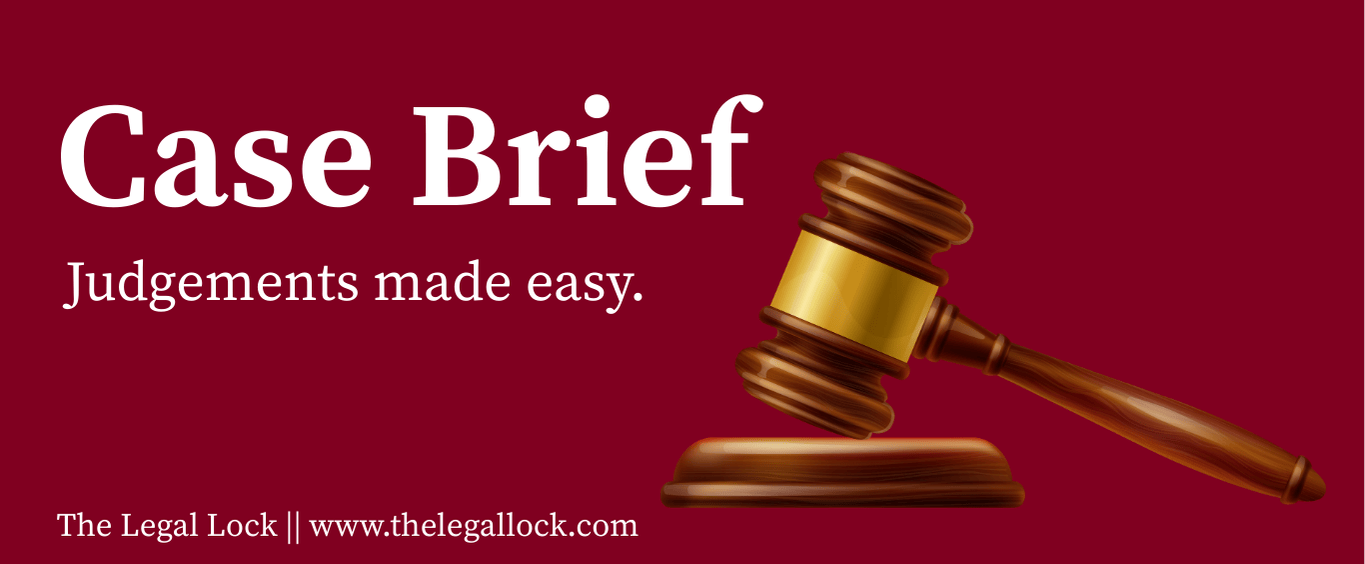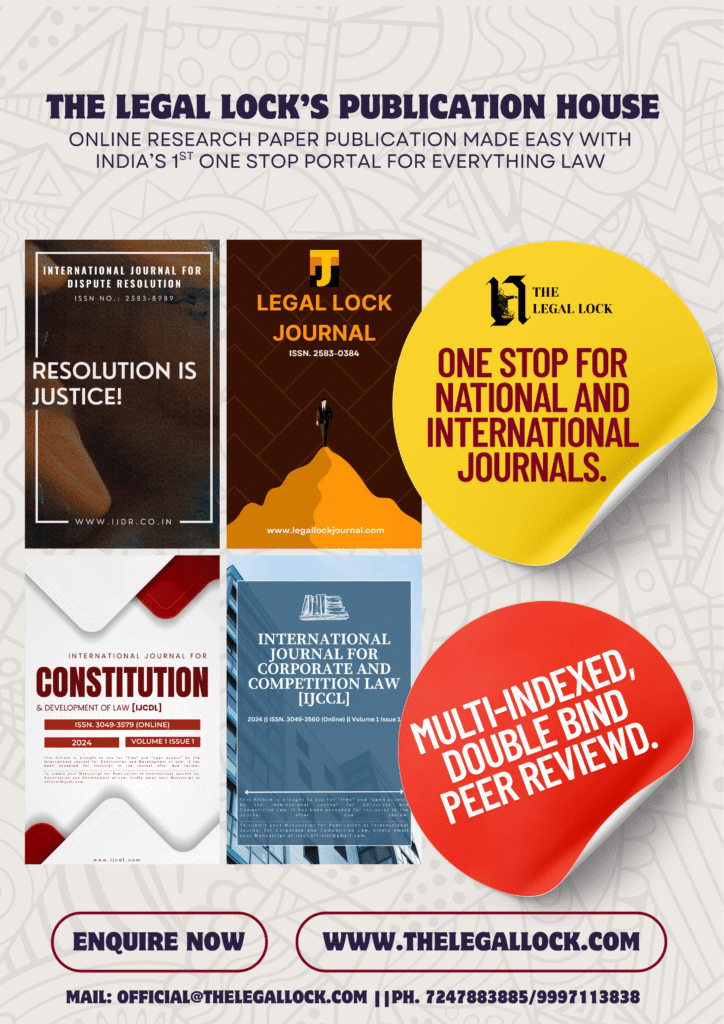CASE BRIEF: M/S. Shubham Corporation Private vs M/S Navayuga Infotech Private Limited

| CASE NAME | M/S. Shubham Corporation Private vs M/S Navayuga Infotech Private Limited |
| CITATION | Company Appeal (AT) (CH) (Insolvency) No. 163 of 2023 |
| COURT | National Company Law Appellate Tribunal |
| Bench | Rakesh K. Jain, A.D. Mehrotra |
| Date of Decision | 22 May, 2024 |
Introduction
The case of M/S Shubham Corporation Private Limited vs. M/S Navayuga Infotech Private Limited marks a crucial development in India’s insolvency jurisprudence. This appeal, adjudicated by the National Company Law Appellate Tribunal (NCLAT), Chennai, addresses fundamental legal questions regarding the classification of financial claims and the interpretation of Compulsory Convertible Debentures (CCDs) under the Insolvency and Bankruptcy Code (IBC), 2016.
The dispute arose when the Resolution Professional (RP) initially admitted Shubham Corporation’s claim as a financial debt and included it in the Committee of Creditors (CoC). However, objections were raised over the nature of the CCDs, arguing that they represented an equity instrument rather than a debt obligation. The National Company Law Tribunal (NCLT), Hyderabad, ruled against Shubham Corporation’s inclusion in the CoC, prompting this appeal.
NCLAT’s ruling reaffirmed the principles established in prior jurisprudence, particularly emphasizing that CCDs, which lack an obligation for repayment, must be treated as equity rather than financial debt. This decision not only reinforces creditor classification standards but also underscores the judiciary’s role in ensuring adherence to statutory frameworks under the IBC, further shaping India’s insolvency landscape.
FACTS
The appellant, M/S Shubham Corporation Private Limited (Shubham Corporation), is a financial entity that extended unsecured loans to M/S Navayuga Infotech Private Limited (the corporate debtor) between 2012 and 2020. As of 2020, the outstanding amount, including accrued interest, totaled ₹110,85,44,776. Unable to fulfill its repayment obligations, the corporate debtor proposed converting this debt into Zero Coupon Compulsory Convertible Debentures (CCDs), which Shubham Corporation accepted. A Debenture Subscription Agreement (DSA) was executed on March 2, 2020, formalizing the conversion of the outstanding loan into CCDs with a mandatory conversion into equity shares within 10 years.
In September 2022, Vajra IOT Private Limited, an operational creditor, initiated a Corporate Insolvency Resolution Process (CIRP) against Navayuga Infotech under Section 9 of the Insolvency and Bankruptcy Code (IBC), 2016. Following the admission of the CIRP, Mr. Kotoju Vasudeva Rao was appointed as the Interim Resolution Professional (IRP), who invited claims from creditors and constituted the Committee of Creditors (CoC). Initially, only two claims were received—one from the operational creditor and another from the Deputy Director of employees’ State Insurance.
On November 11, 2022, Shubham Corporation submitted its claim as a financial creditor based on the CCDs issued under the DSA. After verification, the IRP accepted the claim, included Shubham Corporation in the list of financial creditors, and reconstituted the CoC accordingly. However, Vajra IOT Private Limited objected to this inclusion, arguing that CCDs do not qualify as financial debt under the IBC. The operational creditor petitioned the National Company Law Tribunal (NCLT), Hyderabad, seeking the removal of Shubham Corporation from the CoC.
The NCLT, upon reviewing the DSA and the nature of CCDs, ruled that Shubham Corporation’s claim did not constitute financial debt. The Tribunal held that CCDs, being mandatorily convertible into equity and lacking a repayment obligation, must be treated as an equity instrument rather than a debt liability. Consequently, the NCLT rejected the IRP’s revised list of CoC members and ordered the removal of Shubham Corporation from the CoC.
Aggrieved by this decision, Shubham Corporation appealed before the National Company Law Appellate Tribunal (NCLAT), Chennai, arguing that CCDs represent an acknowledgment of debt and should be classified as financial debt. The appeal raised crucial legal questions about creditor classification under the IBC, the treatment of CCDs in insolvency proceedings, and procedural fairness in determining CoC membership.
ISSUES
- Whether the classification of Shubham Corporation Private Limited as an equity holder rather than a financial creditor was legally permissible under the Insolvency and Bankruptcy Code (IBC), 2016.
- Whether the NCLT’s decision to exclude Shubham Corporation from the Committee of Creditors (CoC) was justified under the IBC and applicable judicial precedents.
- Whether the exclusion of Shubham Corporation from the CoC violated the principles of natural justice and procedural fairness under the IBC.
ARGUMENTS FROM BOTH SIDES
Arguments by the petitioners
- Shubham Corporation argued that its claim, arising from Compulsory Convertible Debentures (CCDs), constituted financial debt under Section 5(8) of the IBC. The petitioner contended that CCDs serve as an acknowledgment of debt and should not be treated as equity until they are actually converted into shares. By excluding it from the CoC, the NCLT misinterpreted the nature of its financial interest in the corporate debtor.
- The petitioner claimed that the NCLT’s decision to reject its status as a financial creditor was made without granting it a fair hearing. Shubham Corporation was not given adequate opportunity to present its case before being removed from the CoC, violating fundamental principles of natural justice and procedural fairness under the IBC.
- Shubham Corporation pointed out that, even after executing the Debenture Subscription Agreement (DSA), the corporate debtor continued to reflect the CCDs as long-term borrowings in its financial records. This, the petitioner argued, demonstrated that both parties treated the CCDs as debt rather than equity, reinforcing its claim to financial creditor status.
- The petitioner contended that, under the insolvency resolution framework, all liabilities and obligations of the corporate debtor are either settled or wiped clean upon the approval of a resolution plan. Since Shubham Corporation had not yet exercised its option to convert the CCDs into equity, its claim should remain classified as debt under IBC, ensuring fair treatment.
Arguments by the Respondents
- The respondents maintained that CCDs, by their very nature, are compulsorily convertible into equity and do not create a repayment obligation. Under the Debenture Subscription Agreement (DSA), Shubham Corporation had agreed to convert its debt into equity, thereby relinquishing its right to claim financial debt status under the IBC.
- Relying on the Supreme Court’s ruling in M/s IFCI Limited v. Sutanu Sinha, the respondents argued that CCDs cannot be treated as financial debt. Since the petitioner had voluntarily accepted the terms of conversion, its claim could not be considered within the definition of financial debt under Section 5(8) of the IBC.
- The respondents contended that the petitioner was not wrongfully denied a hearing. The adjudicating authority had based its decision on a detailed examination of the Debenture Subscription Agreement and applicable legal provisions, and there was no procedural lapse that warranted interference.
DECISION
In M/S Shubham Corporation Private Limited vs. M/S Navayuga Infotech Private Limited, the National Company Law Appellate Tribunal (NCLAT), Chennai, addressed key legal questions surrounding creditor classification and procedural fairness under the Insolvency and Bankruptcy Code (IBC), 2016.
The Tribunal upheld the National Company Law Tribunal (NCLT), Hyderabad’s ruling that Compulsory Convertible Debentures (CCDs) held by Shubham Corporation do not constitute financial debt under Section 5(8) of the IBC. It reasoned that CCDs, by their very nature, lack a repayment obligation and must be treated as an equity instrument rather than a financial liability. Since Shubham Corporation had agreed to a mandatory conversion of its debt into equity, it was not entitled to be recognized as a financial creditor or participate in the Committee of Creditors (CoC).
The Tribunal relied on the Supreme Court’s precedent in M/s IFCI Limited v. Sutanu Sinha, which established that CCDs are equity instruments unless they specifically contain a repayment clause. It rejected Shubham Corporation’s argument that its exclusion from the CoC violated principles of natural justice, holding that the adjudicating authority had correctly interpreted the contractual terms.
As a result, the NCLAT dismissed the appeal, affirming that Shubham Corporation’s claims do not qualify as financial debt under the IBC. This decision reinforced judicial clarity on CCD classification in insolvency proceedings and underscored the importance of statutory compliance in creditor categorization.
CONCLUSION
The decision in M/S Shubham Corporation Private Limited vs. M/S Navayuga Infotech Private Limited underscores the importance of proper creditor classification, adherence to statutory provisions, and judicial consistency under the Insolvency and Bankruptcy Code (IBC), 2016.
A key aspect of the ruling was the determination that Compulsory Convertible Debentures (CCDs) do not qualify as financial debt under Section 5(8) of the IBC. This conclusion aligns with the Supreme Court’s precedent in M/s IFCI Limited v. Sutanu Sinha, where CCDs were held to be equity instruments rather than debt due to their lack of a repayment obligation. By reaffirming this principle, the judgment provides clarity on the treatment of CCDs in insolvency proceedings and prevents their misclassification as financial debt.
Additionally, the decision highlights the limited scope of judicial intervention in Committee of Creditors (CoC) decisions. The tribunal rejected Shubham Corporation’s contention that its exclusion from the CoC violated natural justice, ruling that procedural fairness was upheld since the contractual terms of the Debenture Subscription Agreement (DSA) clearly mandated conversion into equity.
This case sets a precedent reinforcing that insolvency resolution must adhere strictly to the IBC’s definitions and framework. It serves as a reminder to creditors and resolution professionals that the classification of financial claims must be based on the underlying contractual obligations. By maintaining statutory consistency, the ruling strengthens transparency and predictability in insolvency proceedings, ensuring a balanced approach between commercial pragmatism and legal compliance.








